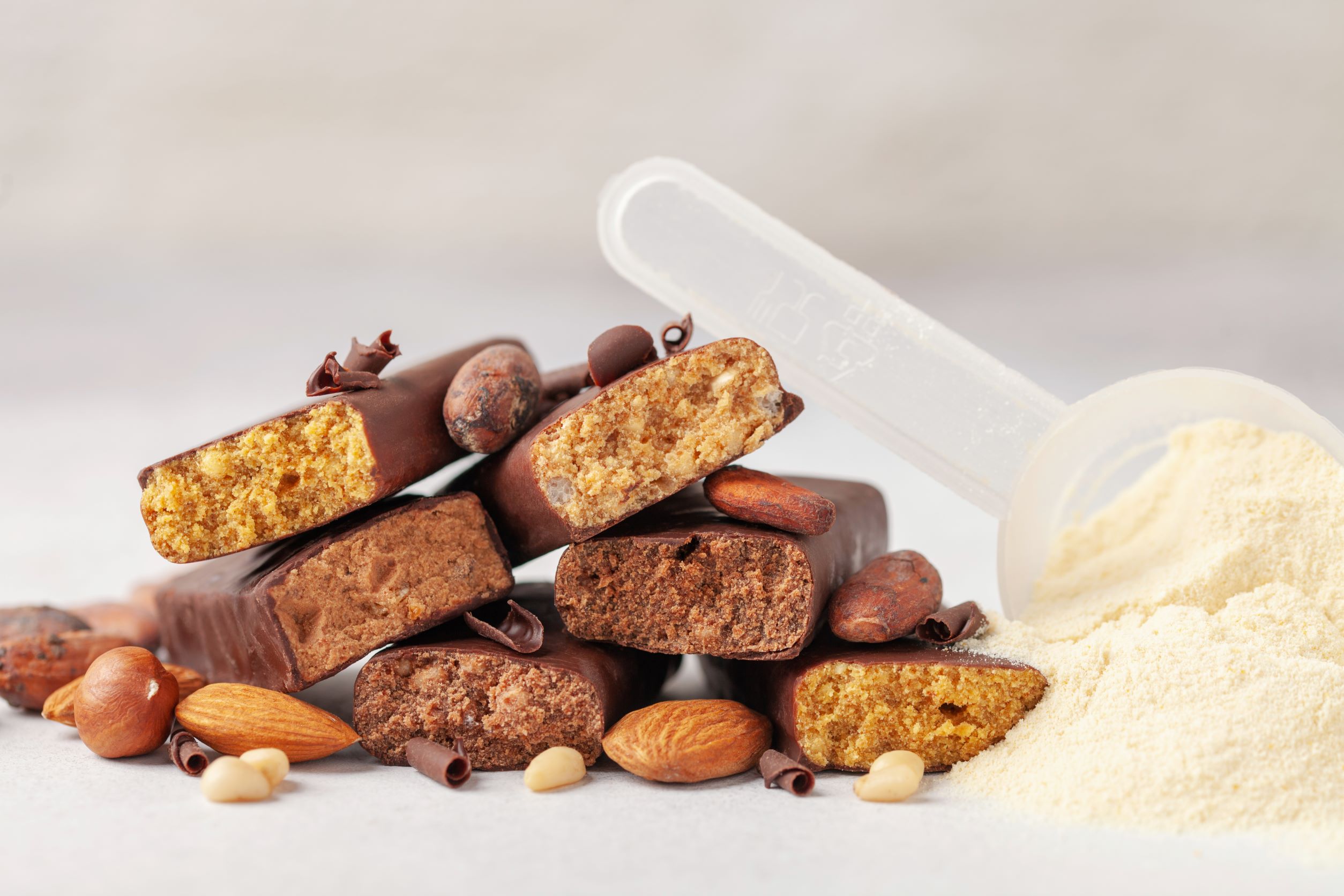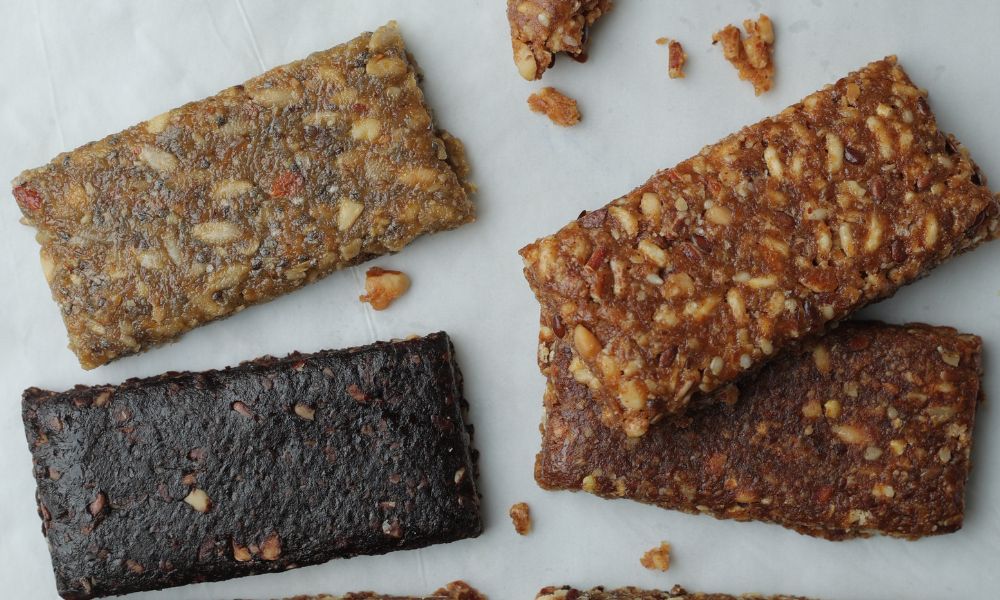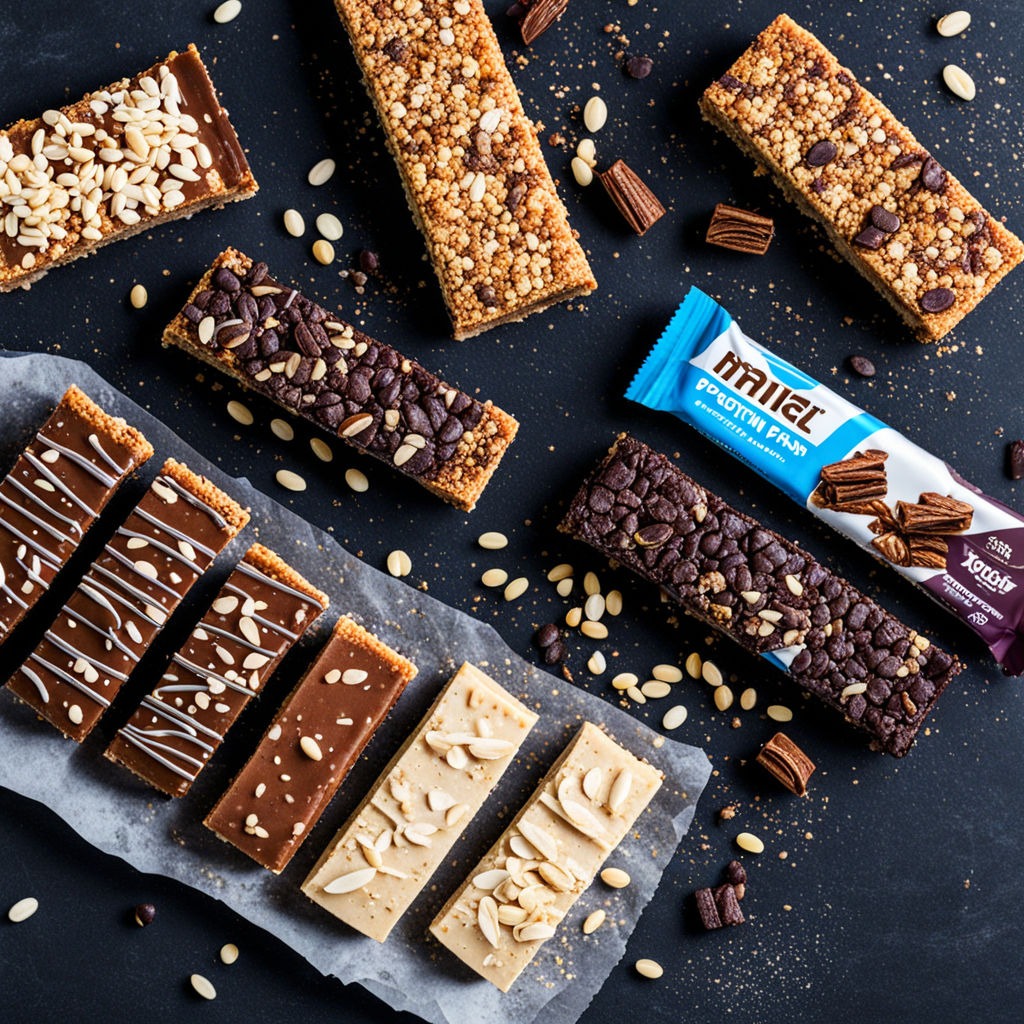Introduction

Protein bars have become a popular snack and dietary supplement, offering a convenient way to increase protein intake. They are often marketed towards athletes, fitness enthusiasts, and busy individuals seeking a quick and nutritious option. Available in various flavors and formulations, protein bars can cater to a wide range of dietary preferences and needs.
Importance of Protein in the Diet
Protein is a crucial macronutrient that plays a vital role in building and repairing tissues, producing enzymes and hormones, and supporting immune function. It is essential for muscle growth and maintenance, making it particularly important for those engaged in regular physical activity. Adequate protein intake is also linked to weight management, as it can help increase satiety and reduce overall calorie consumption. For more information, visit Harvard Health.
Purpose of the Article
The purpose of this article is to provide a comprehensive guide to protein bars. We will explore their benefits, various types available on the market, key ingredients, and how to choose the right one for your specific needs. Additionally, we will review popular brands, share homemade protein bar recipes, and address common myths and misconceptions. By the end of this guide, you will have a better understanding of protein bars and how to incorporate them into your diet effectively.
What Are Protein Bars?
Protein bars are nutritional bars that contain a significant amount of protein, typically ranging from 10 to 30 grams per serving. They are designed to serve as a convenient source of protein and other nutrients, often including carbohydrates, fats, vitamins, and minerals. Protein bars are commonly used as a snack, meal replacement, or post-workout supplement to aid in muscle recovery and growth. They come in various flavors, such as chocolate, peanut butter, and fruit, catering to different taste preferences. To learn more about what constitutes a protein bar, visit WebMD’s overview on protein bars.
Historical Background
The concept of protein bars can be traced back to the 1960s when they were initially developed for astronauts as a compact and efficient way to deliver essential nutrients during space missions. These early versions, known as “space food sticks,” were designed by Pillsbury for NASA’s Apollo program. Over time, the idea evolved, and protein bars began to appear in health food stores and gyms, targeting bodybuilders and athletes seeking a portable source of protein.
Evolution of Protein Bars Over the Years

The evolution of protein bars has been marked by significant advancements in both formulation and marketing. In the 1990s, protein bars gained mainstream popularity with the rise of fitness culture and the increased awareness of protein’s role in muscle building. Companies started experimenting with various protein sources, including whey, soy, and plant-based options, to cater to different dietary needs. The early 2000s saw a surge in the variety of protein bars, with brands focusing on organic, gluten-free, and vegan formulations to appeal to a broader audience.
Today, protein bars are a billion-dollar industry, with a wide range of options available in supermarkets, convenience stores, and online. Modern protein bars not only focus on high protein content but also aim to deliver balanced nutrition with added benefits like fiber, probiotics, and superfoods. The market continues to evolve, driven by consumer demand for healthier, cleaner, and more sustainable products.
Benefits of Protein Bars

One of the primary benefits of protein bars is their convenience. They offer a quick and easy way to boost protein intake without the need for meal preparation. This makes them an ideal option for people with busy lifestyles, athletes on the go, and those who need a portable snack. Protein bars are also shelf-stable, meaning they can be stored for extended periods without refrigeration, making them perfect for travel or keeping in your gym bag. For more on the convenience of protein bars, visit Bodybuilding.com.
Aid in Muscle Recovery and Growth
Protein is essential for muscle recovery and growth, especially after intense workouts. Consuming a protein bar post-exercise can help repair muscle tissues that break down during physical activity, promote muscle protein synthesis, and support overall muscle growth. Many protein bars are formulated with high-quality protein sources like whey or casein, which are known for their effectiveness in promoting muscle recovery.
Weight Management and Satiety
Protein bars can be an effective tool for weight management due to their high protein content, which helps increase feelings of fullness and satiety. Protein has been shown to reduce hunger levels and control appetite, making it easier to stick to a healthy eating plan and avoid overeating. Additionally, some protein bars are designed to be low in calories and sugar, further aiding in weight control efforts. For more information on how protein aids in weight management, visit Health.com.
Energy Boost for Workouts and Daily Activities
Protein bars often contain a balanced mix of macronutrients, including carbohydrates and fats, which provide a steady source of energy. This makes them an excellent option for a pre-workout snack to fuel exercise or a midday snack to combat energy slumps. The combination of protein and carbs can help maintain blood sugar levels and sustain energy throughout physical activities and daily tasks. For more on using protein bars for energy, read Medium’s article on protein bars.
Nutritional Supplementation
Beyond protein, many protein bars are fortified with additional nutrients, such as vitamins, minerals, fiber, and healthy fats. This makes them a valuable nutritional supplement, especially for individuals who might have gaps in their diet. Whether you need extra fiber for digestive health, omega-3 fatty acids for heart health, or vitamins and minerals to support overall wellness, there is likely a protein bar that fits your needs. For more about the nutritional benefits of protein bars, you can visit this detailed overview from Health.com.
Types of Protein Bars
High-protein bars are specifically formulated to provide a substantial amount of protein per serving, often ranging from 20 to 30 grams. These bars are ideal for individuals looking to increase their protein intake significantly, such as bodybuilders, athletes, and those recovering from injuries. High-protein bars typically use sources like whey, casein, soy, or pea protein to ensure a complete amino acid profile. For more information on high-protein bars, visit Bodybuilding.com’s guide to protein bars.
Low-Carb Protein Bars
Low-carb protein bars are designed for individuals following low-carb or ketogenic diets. These bars usually contain a minimal amount of carbohydrates, often using alternative sweeteners like stevia or erythritol to maintain a sweet taste without the carbs. Low-carb protein bars are perfect for those looking to manage their blood sugar levels or reduce their overall carbohydrate intake. For an overview of low-carb protein bars, check out Bodybuilding.com.
Meal Replacement Bars
Meal replacement bars are intended to provide a balanced mix of macronutrients (protein, carbohydrates, and fats) and essential vitamins and minerals to serve as a substitute for a full meal. These bars are typically higher in calories compared to standard protein bars and are designed to keep you full and satisfied for several hours. They are convenient for people who need a quick, nutritious option when they don’t have time for a proper meal.
Energy Bars
Energy bars are formulated to provide a quick boost of energy, primarily through carbohydrates, which are the body’s preferred energy source. These bars often contain ingredients like oats, honey, and dried fruits to provide sustained energy for physical activities, such as hiking, running, or intense workouts. While they also contain some protein, their main focus is on delivering fast and efficient energy. For a deeper understanding of energy bars, read Runner’s World.
Organic and Natural Protein Bars
Organic and natural protein bars are made with ingredients that are free from synthetic pesticides, fertilizers, and genetically modified organisms (GMOs). These bars cater to health-conscious consumers who prioritize clean eating and sustainable practices. They often feature whole food ingredients like nuts, seeds, and organic protein sources.
Vegan and Vegetarian Options
Vegan and vegetarian protein bars are formulated without any animal products, making them suitable for individuals following plant-based diets. These bars typically use protein sources like pea, rice, hemp, and soy. They are designed to provide a complete amino acid profile through a combination of plant-based ingredients.
Gluten-Free and Allergen-Friendly Bars
Gluten-free and allergen-friendly protein bars are crafted to exclude common allergens like gluten, dairy, soy, and nuts. These bars are perfect for individuals with specific dietary restrictions or food allergies. Manufacturers often use alternative ingredients to ensure these bars are safe and nutritious for everyone.
Key Ingredients in Protein Bars
The primary ingredient in protein bars is, unsurprisingly, protein. Different bars use various protein sources depending on their target audience and dietary restrictions. Common protein sources include:
- Whey Protein: Derived from milk, whey protein is a complete protein containing all essential amino acids. It is quickly absorbed by the body, making it ideal for post-workout recovery.
- Soy Protein: A plant-based protein that is also a complete protein, soy is suitable for vegetarians and those avoiding dairy. It has been shown to support muscle growth and recovery.
- Pea Protein: A popular choice for vegan protein bars, pea protein is rich in branched-chain amino acids (BCAAs) and is easily digestible. Learn more about pea protein on Medical News Today.
- Other Sources: Rice protein, hemp protein, and collagen are also used in protein bars, catering to various dietary preferences and health goals.
Carbohydrates and Fiber
Carbohydrates provide energy, and fiber aids in digestion. The type and amount of carbohydrates can vary significantly between different protein bars:
- Complex Carbohydrates: Ingredients like oats, quinoa, and brown rice provide sustained energy and help stabilize blood sugar levels.
- Simple Carbohydrates: Sugars from honey, fruits, and syrups offer quick energy but may cause rapid spikes in blood sugar.
- Fiber: Added through ingredients like chicory root, inulin, and soluble corn fiber, fiber enhances satiety and supports digestive health.
Fats and Oils
Fats are essential for overall health and can improve the texture and flavor of protein bars. Common sources include:
- Healthy Fats: Nuts, seeds, and nut butters provide healthy monounsaturated and polyunsaturated fats.
- Oils: Coconut oil and palm oil are often used for their stable shelf life and texture-enhancing properties.
- MCT Oil: Medium-chain triglycerides (MCTs) from coconut oil are quickly absorbed and used for energy.
Sweeteners (Natural vs. Artificial)
Sweeteners are used to enhance the taste of protein bars. They can be natural or artificial:
- Natural Sweeteners: Honey, maple syrup, dates, and stevia provide sweetness without artificial chemicals. They also add some vitamins, minerals, and antioxidants.
- Artificial Sweeteners: Sucralose, aspartame, and acesulfame potassium are calorie-free options that provide sweetness without impacting blood sugar levels. However, they may have health concerns when consumed in large quantities.
Additives and Preservatives
To extend shelf life and improve texture and flavor, protein bars may contain various additives and preservatives:
- Preservatives: Ingredients like citric acid, ascorbic acid, and natural tocopherols (vitamin E) are used to prevent spoilage and maintain freshness.
- Stabilizers and Emulsifiers: Lecithin, glycerin, and guar gum help maintain texture and consistency.
- Flavorings and Colorings: Natural flavors, cocoa, vanilla, and fruit extracts enhance taste, while natural colorings provide visual appeal. For more on food additives and preservatives, refer to FDA’s guide.
How to Choose the Right Protein Bar for You
The first step in choosing the right protein bar is to determine your individual protein needs. This can vary based on factors such as age, sex, weight, and activity level. Generally, active individuals or those looking to build muscle may need more protein. A common guideline is to consume 0.8 to 1.2 grams of protein per kilogram of body weight. For personalized recommendations, consult a nutritionist or use online calculators to find your ideal protein intake.
Reading and Understanding Nutrition Labels
When on a quest to find the perfect protein bar, it’s essential to read and understand nutrition labels. Look for bars that are packed with high-quality protein sources and check the protein content per serving. Pay attention to the amount of sugar, fiber, and total calories. Be wary of bars with high amounts of sugar alcohols, which can cause digestive discomfort in some people. Understanding these labels will help you make an informed choice that aligns with your health goals. For more guidance on reading nutrition labels, visit FDA’s guide.
Identifying Dietary Restrictions and Preferences
Identify any dietary restrictions and preferences you have to find a protein bar that suits your needs. Whether you are vegan, gluten-free, or have allergies to specific ingredients, there are plenty of options available. Look for bars that clearly state they meet these dietary requirements. Brands like Quest offer a variety of delicious bars that cater to different dietary needs, ensuring you find a suitable option without compromising on taste or nutrition.
Considering Taste and Texture
Taste and texture are crucial when choosing a protein bar, as they can affect your enjoyment and consistency in consuming them. Protein bars come in various flavors and textures, from chewy and nutty to smooth and chocolatey. It may take some trial and error to find the ones you enjoy most. Many people find bars from well-known brands like Quest to be delicious and satisfying. Reading reviews and trying sample packs can help you discover your favorites.
Evaluating Price and Value for Money
Finally, evaluate the price and overall value for money when choosing a protein bar. While some high-quality bars might be more expensive, they often provide better nutritional profiles and taste. Consider buying in bulk to reduce costs per bar. Compare the price per serving and the nutritional benefits each bar offers. Sometimes, paying a little more for a well-balanced, tasty, and nutritionally packed bar is worth the investment.
Top Protein Bar Brands and Recommendations
Several brands have established themselves as leaders in the protein bar market due to their consistent quality, taste, and nutritional value. Some of the most popular and reputable brands include:
- Quest Nutrition: Known for their low-carb, high-protein bars that come in a variety of delicious flavors. Quest bars are a favorite among fitness enthusiasts and those following ketogenic diets.
- RXBAR: Recognized for their minimalist ingredient list, RXBARs are made with whole foods like egg whites, nuts, and dates. They are gluten-free and free from added sugars.
- CLIF Bar: Popular among athletes, CLIF Bars provide a balanced mix of carbohydrates, protein, and fats, making them ideal for sustained energy during physical activities.
- Kind Bar: Focuses on natural ingredients and offers a range of protein bars that are low in sugar and high in fiber. Kind bars are known for their great taste and wholesome ingredients.
- ONE Bar: Offers a variety of high-protein bars with unique flavors. ONE bars are gluten-free and low in sugar, making them a good option for those watching their sugar intake.
Detailed Review of a Few Top-Rated Protein Bars
Quest Bars: Quest Bars are praised for their high protein content (20 grams per bar) and low carbohydrate count. They use whey and milk protein isolates, making them highly effective for muscle recovery and growth. Quest Bars come in a variety of flavors, such as Cookies & Cream and Chocolate Chip Cookie Dough, ensuring there’s a delicious option for everyone. However, they do contain sugar alcohols, which some individuals may find cause digestive discomfort.
RXBAR: RXBARs stand out due to their simple, whole-food ingredients. Each bar contains around 12 grams of protein, primarily from egg whites, and is sweetened naturally with dates. They are free from added sugars and artificial ingredients. Popular flavors include Chocolate Sea Salt and Blueberry. RXBARs have a chewy texture and are a great option for those seeking a natural and minimally processed snack.
CLIF Bar: CLIF Bars are a go-to for athletes needing sustained energy. Each bar provides around 10 grams of protein and a higher carbohydrate content to fuel long workouts. They include organic rolled oats, making them a good source of fiber. Flavors like White Chocolate Macadamia Nut and Chocolate Chip are favorites. While they are higher in sugar, they are designed to support endurance activities.
